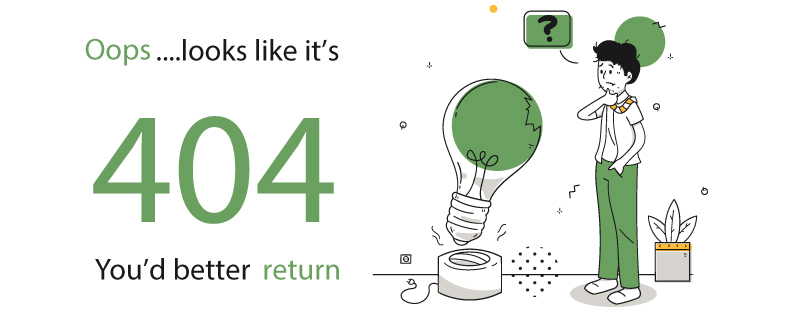It is pretty complex to develop a clean website for the success of a brand. The job is difficult because many factors depend on the success of an appealing UI for a website. A UI with blunders might negatively influence the company’s reputation and overall performance.
It’s crucial to monitor and evaluate your website design for the most pleasing UI (user interface). The better it is, the higher the chances of generating profitable leads. In this blog, we will see 10 website UI design mistakes that might be hurting your conversions.
Let’s get going!
Unresponsive Design
The design of the website needs to be responsive and fast. An unresponsive and slow UI will never deliver the desired results. The finest UI saves time and attracts a larger audience. On the other hand, an unresponsive UI takes more time to load and forces the clients to leave and purchase from another company.
Nowadays, more than 14 Billion people are mobile phone users, and they go online daily. According to statistical analysis, by the end of 2021, this number will rise. Clients do not like to wait for a website to load. They are smart enough to leave when they cannot access the fantastic features. Responsive design enables your website to be adaptable across a wide range of screen resolutions and platforms.
Poor Site Navigation
Navigation is another most essential factor to consider while designing the UI of the website. Many people are used to utilizing sites on their mobile phones. Sometimes a website that looks good on your laptop/PC might not look that appealing on your mobile phone. So, it is better to design your website from all angles, including the most OK navigation on all devices: Mobile, PC, Tablets.
Ask yourself: are the elements of your website easy to click on? How will it work on a smaller screen?
You might wonder what the most OK navigation looks like. Well, the best navigation is minimal in style and simple to use. It does not demand much work at the customer’s end. And it works fine on all devices.
Bad CTA Design
CAT stands for Call to action. These define the conversion rate and profitable leads of your website. Everything about the text and colour must be convincing and appealing. For a good UI design, you should consider every element of your CTA. It includes colour, size, design, location, length, and language.
These components are influenced by the target audience of your brand. As a result, you should be familiar with the audience’s thinking and purchasing behaviour. It will help you understand which colour combination, font style, size, and language are better for your website.
Remember: If a CTA is noticeable and pleasant, it’s clickable.
Cluttered Layout
The clients do not want to visit a cluttered and jammed interface. So, when developing the website, make sure to think of the website’s layout from the customer’s perspective. Each element on your website must complement another aspect. It must give a wholesome look.
These elements must be appealing enough to catch the client’s attention. They are also perplexing, and users may make an incorrect choice as a result.
Because the user may overlook your CTA or any critical discount, this will result in a lower conversion rate for your website.
Hiding Crucial Information
The page fold of your website is one of the critical factors that a visitor couldn’t help but notice. So, you must keep it in mind when designing UI. In just the first few seconds of the visit, a user can tell if the website is worth staying for or not.
This implies you have little time to make an impression on your visitors, and this is where the significance of the page fold comes into play. If your call-to-action buttons or website messages are under the fold, only a few visitors will notice them, and they will count as a failure.
An experienced design agency like us can fix this – at scale, for you!
Ignoring UX
Web designers sometimes put too much interest and effort into UI to completely ignore a good UX. Others disrespect their target audience throughout the process, which means that the site’s definite users will not utilize it.
The reason is the lack of weak market research and unclear identification of your target audience. It means that you design your website based on biases rather than facts.
The highest level of conversions is possible only for highly user-oriented websites. Understand your users and apply that knowledge while developing your website.
Heavy Text Content
A text-loaded and jam-packed website will never be efficient. It will either crush your visitors or divert their attention from taking action. It is attractive and appealing that you are explaining your products and services in detail.
It is the point where you utilize correct marketing techniques to make your content look detailed but not too much.
The objective is to communicate with a minor, so every copy for each website page must be carefully composed and tested for emotional response. And, it must complement the design aspects too!
No Quality Content
A reasonable practise is to have at least 300 words per website page. The more in-depth writing, the more details are covered. It is better to include a detailed video with little introductory text. It will interact with the audience and make them stay.
The content in your website must match the mindset of your audience. Boring content will only be your downfall. The idea is to make every page visually engaging with design and persuasive through the copy.
Using Generic Imagery
The images on your website must be generic and not lean towards a specific ethnicity/religion. It is a massive marketing strategy to keep things general and clean. The clients catch the feeling to stay and make a purchase when they feel attached to the website. In the marketing world, it means hitting the emotions.
Stock photos trigger only one mood: doubt.
Customers visit your website to find a solution. Customers want to trust you. And they won’t be able to trust you if you tell them the wrong thing at first sight. To gain buyer confidence, website pictures must be genuine and inspiring.
Inconsistent Design
It is an excellent practice to keep things intact and consistent throughout the design. It will look professional if you have the essential features on your websites like headers, content, and products. However, the key is to make the design consistent and flawless.
For example, if one page has a red sub-header while other pages have a different colour, the inconsistency will be visible and distracting.
A consistent design will yield optimum UI if all the other design aspects are aligned well.
Great design comes when you walk a mile in the end-user’s shoes. At Mexil, we deliver delightful designs at scale to make your brand a customer magnet.
Frequently Asked Questions
What is a poor user interface?
Characteristics of a poor user interface: Slow and clumsy – interactions will be slow and awkward. Complicated – the site will be challenging to comprehend. Make sure the font size is adequate, the font itself is appropriate, and the colour scheme of your website makes it easy to understand what’s on it.
How to avoid inconsistency?
To avoid inconsistency, keep an eye on the following elements:
- The consistent colour palette for buttons, text, links, header, footer, hover states, etc.
- Consistent font styles for titles, paragraphs, links, etc.
What makes a website look bad?
The Page Cluttered With Too Many Elements – The site should have a clean layout in addition to a clear message. People will leave if the page is cluttered since it is difficult to navigate. Arngren.net is an excellent example of poor design. Take a look at Amazon or AliExpress for a fantastic example of multi-product web design.

